Who was Anne Frank?
- Published
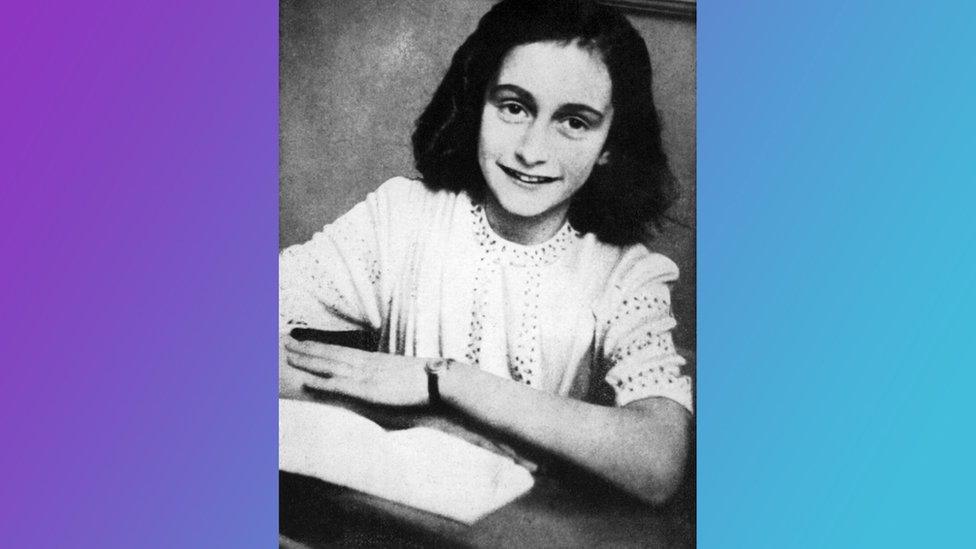
The diary of Anne Frank - a young teenager who documented her life in hiding during the Holocaust - has become one of the most famous books in the world
Born on 12 June 1929, Anne Frank was a young teenager in the Netherlands during the Holocaust.
Saturday 30th April marks 70 years since her diary was first published in English, back in 1952.
Anne lived in Amsterdam with her family, but - in 1942 - the Franks were forced to go into hiding from the Nazis who wanted to get rid of Europe's Jewish population.
During this time in hiding, Anne kept a diary, which would go on to become one of the most famous books in the whole world.
But she would never live to see her dream of becoming a writer a reality, as she was tragically killed in the Holocaust. It was her father who published her writing, as he survived World War Two and her diary was passed on to him.
Find out more about the amazing teenager who told the world her story of one of the most terrible events in modern history.
What was Anne Frank's early life like?
Annelies Marie Frank - better known as Anne Frank - was born in the German city of Frankfurt in 1929 to a Jewish family. She had a sister called Margot who was three years older than her, and her parents were called Edith and Otto.
WATCH: Anne Frank's friend Eva: 'Anne was a big chatterbox!' (Taken from Anne Frank: A Life in Hiding - A Newsround special)
In the aftermath of World War One, Germany was very poor and life was tough for many people. The Nazi party, led by Adolf Hitler, was growing in popularity and it blamed Jewish people for a lot of the country's problems.
When the Nazis came to power in 1933 after elections, they began to persecute Jewish people and made life incredibly difficult for them.
The Franks decided they needed to get out of Germany, so they moved to Amsterdam in the Netherlands where they thought they would be safe.
Anne went to school, made new friends, learnt to speak Dutch and settled into her new life here.
She was just 10 years old when - on 1 September 1939 - Germany invaded Poland and World War Two was declared.
WATCH: How Jewish people were treated during the Holocaust
Less than a year later, on 10 May 1940, the German army invaded the Netherlands and the Nazis set out to persecute Jewish people there too.
What happened to Anne Frank during the Holocaust?
On her 13th birthday, Anne was given a diary, which she called Kitty. Her first entry is dated 12 June 1942.
At the time, the Nazis had increased their persecution of Jews in the Netherlands.
In the summer of 1942, Anne's sister Margot was ordered by the Nazis to go to work in a camp. But fearing what would really happen to her and the rest of the family, the Franks went into hiding in a secret annex behind Otto's business, which Otto had been preparing for a few weeks.
WATCH: Anne Frank's diary: What was it like to go into hiding? (Taken from Anne Frank: A Life in Hiding - A Newsround special)
Four other people hid with them - the Van Pels family (Hermann, Auguste and their son Peter) and Fritz Pfeffer.
The hidden group were helped by loyal friends of Otto, who would bring them food and news of the outside world.
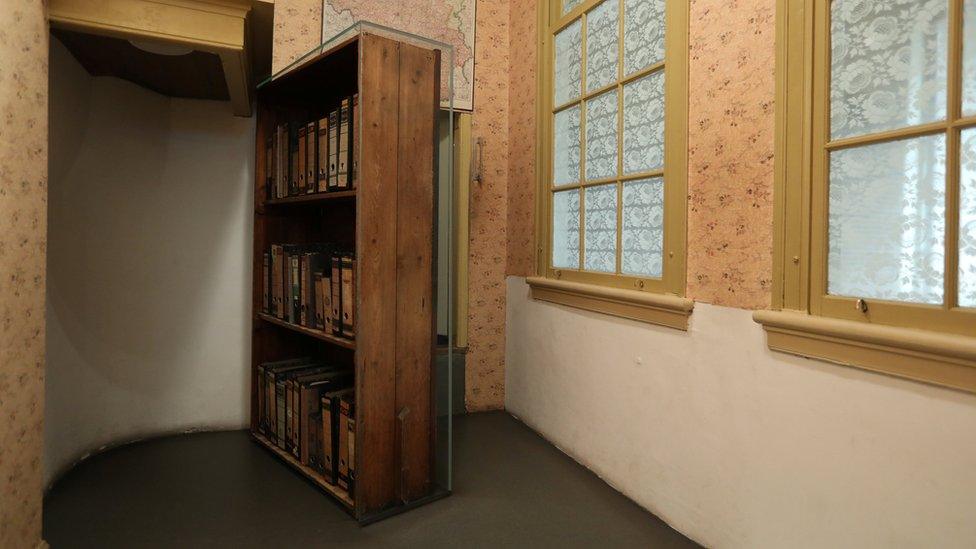
The secret annex where Anne and her family hid during the Holocaust was hidden behind a special bookcase
Anne enjoyed writing throughout her time in hiding, both entries in her diary and other poems and stories. Writing provided her with a form of escape and a great source of comfort.
One day, she heard a feature on the radio by the Minister of Education of the Dutch government in England asking people to hold on to war diaries and documents. It inspired her to rework her diaries into a book.
WATCH: Anne Frank's diary: Life in the annex (Taken from Anne Frank: A Life in Hiding - A Newsround special)
She set to work on her novel Het Achterhuis ('The Secret Annex'). But before she could finish, the family's worst fears were realised. After two years of hiding, the Nazis discovered the secret annex. To this day, nobody knows how they did this.
On 4 August 1944, they arrested everyone who had been hiding in the apartment and sent them to the concentration and death camp Auschwitz-Birkenau. The final entry in Anne's diary was just three days earlier, on 1 August 1944.
What happened to Anne Frank after she was captured?
When they arrived at Auschwitz-Birkenau, the Franks were deemed to be in relatively good health so they were all put to work. Otto was separated from his wife and two daughters. Later, Anne and Margot would be separated from their mother too.
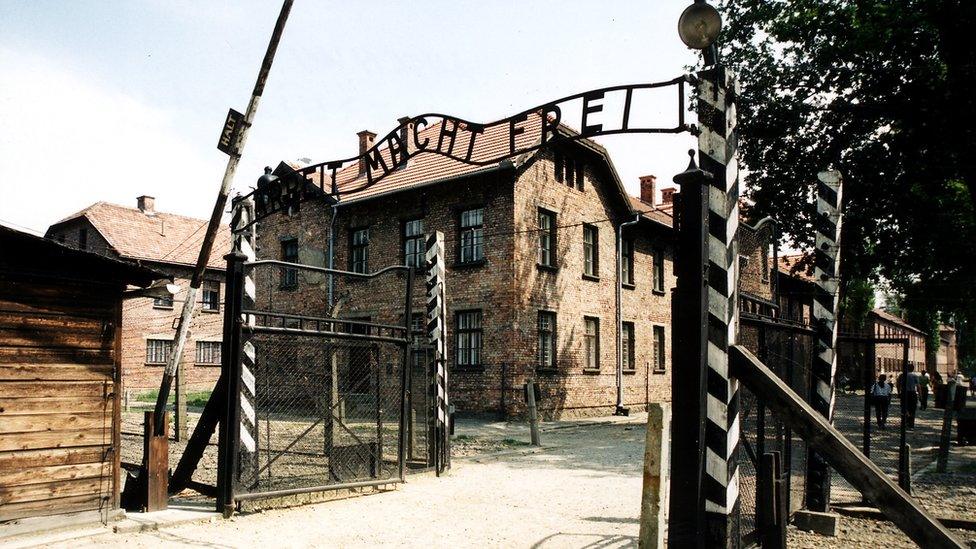
A famous gate at the Auschwitz camp reads 'Arbeit macht frei', which means 'work sets you free' in German
Back in Amsterdam, Miep Gies and Bep Voskuijl - two of Otto's friends who had helped the family while they were in hiding - had found Anne's writing and held on to it, in case she ever came back.
But tragically this was not to be. Anne and Margot were sent to Bergen-Belsen concentration camp in early November 1944, but their health deteriorated. In February 1945, they both died of typhus - movingly, just a few days apart from each other. Their mother Edith was also killed.
Her father, Otto, was the only member of the family to survive the Holocaust. Miep and Bep passed Anne's writing on to him.
When he read it - and saw just how much writing meant to her, and how she wanted "to go on living even after [her] death" - he organised her writing into a book and had her diary published.
On 25 June 1947, just over 3,000 copies of Het Achterhuis ('The Secret Annex') were printed.
It wasn't long before the book was translated into many different languages, turned into a play and a film, and millions of people around the world heard Anne's story.
WATCH: How Otto Frank made his daughter Anne's dream come true (Taken from Anne Frank: A Life in Hiding - A Newsround special)
Her dream of becoming a writer and publishing a novel about her life in hiding had been made a reality.

Anne's diary has been read by millions of people all over the world
In 1960, the site of the secret annex in Amsterdam became an official museum called the Anne Frank House, where the original diary is kept on display. You can still visit it today.
Have you read Anne Frank's diary or visited the secret annex in Amsterdam? What do you think about Anne's story? Let us know in the comments below.
- Published27 January 2019
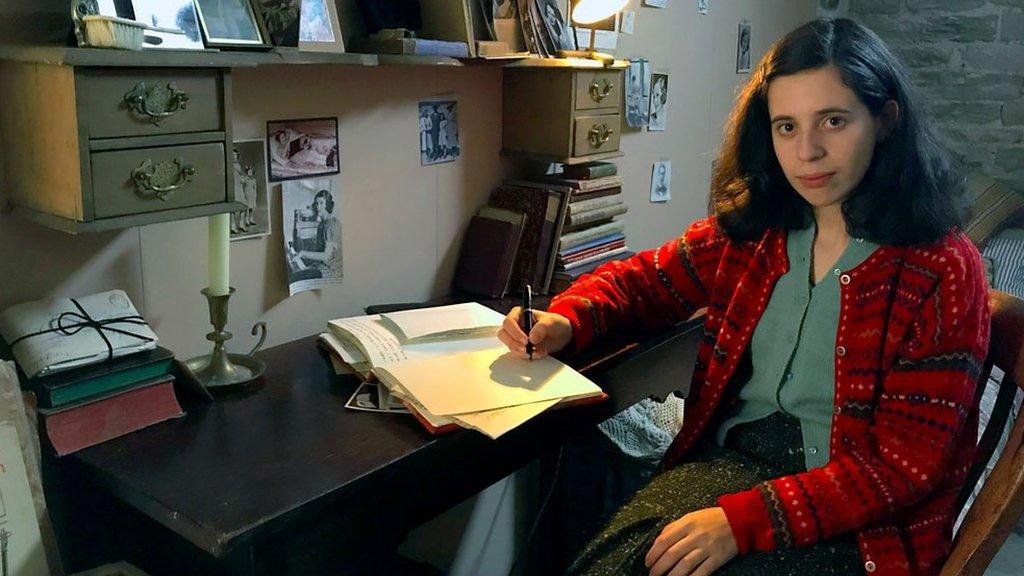
- Published21 January
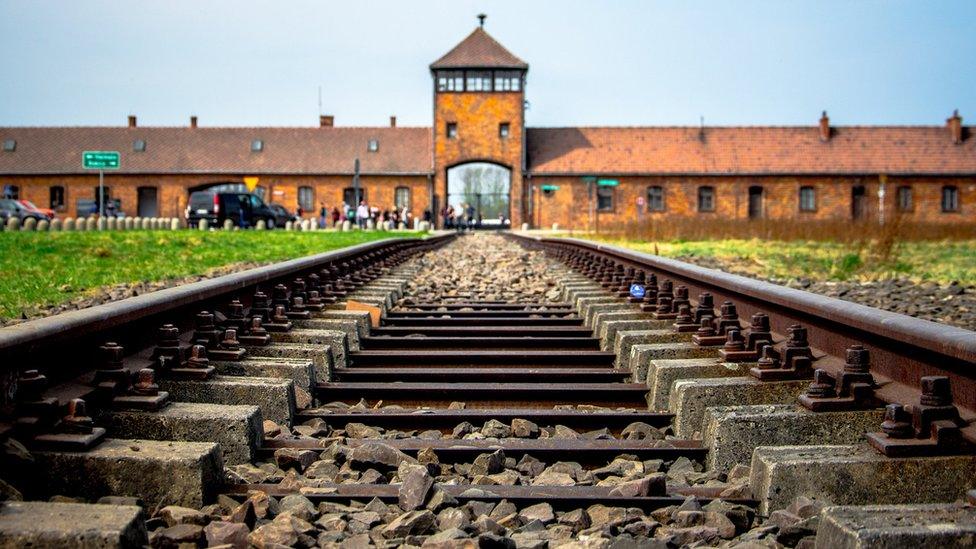
- Published27 January 2023

